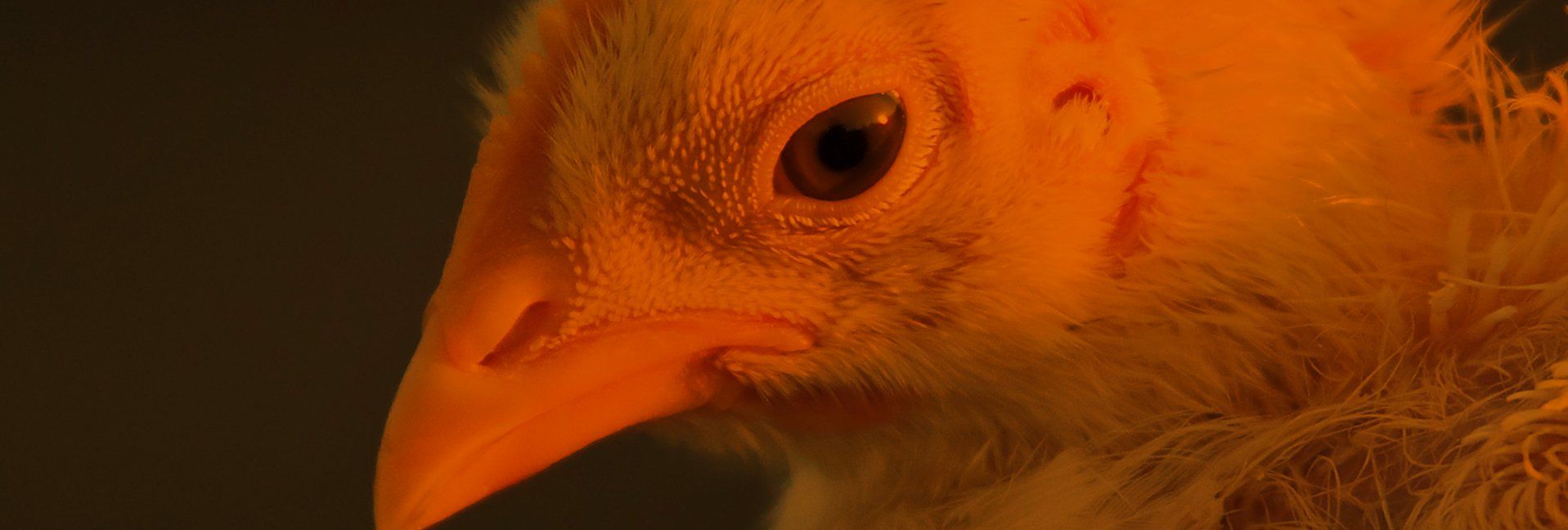How to Reduce Boredom in your Chickens
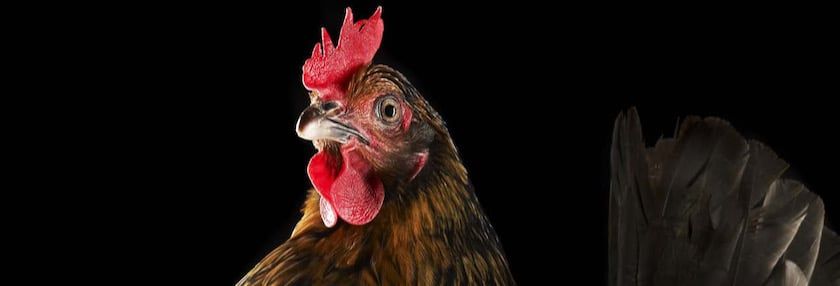

It’s easy—just increase their ‘chicken-ness’
Like most animals, chickens can get bored. Just because an animal is well fed, has water, and a nice home doesn’t mean they can’t get bored (just ask my kids…).
Most of us probably realize chickens are intelligent, and when not stimulated they can feel negative emotions such as boredom and frustration, but also happiness and excitement when they are stimulated.
One of the great pleasures of raising chickens is watching them roam, jump, peck, and dustbathe to their heart’s content. Chickens can be adventurous, quirky, and entertaining!
Letting chickens express their natural behaviors is the best way to “cure” boredom. This has the added benefit of improving welfare and reducing conflict in your flock. It also shows neighbors that your chickens are the smartest, coolest chickens on the block!
Enrichments build ‘chicken-ness’
So what "environmental enrichments”—chicken toys—can you add to your coop to reduce boredom and enhance your chickens overall “chicken-ness?”
In a general sense, environmental enrichments are items that encourage and enhance the expression of natural behaviors, such as perching and dustbathing, to maintain or improve the health of your chickens.
Environmental enrichments provide important mental and physical stimulus that prevents boredom, reduces fearfulness, enhances learning, and improves the health of your chickens.
The following list of different enrichments/toys that will increase your chickens’ overall “chicken-ness”
Consider moving these enhancements around into different configurations, or making a rotational schedule where you remove and reintroduce them after a few weeks.
Dustbaths
Chickens are naturally good at dustbathing, which has many benefits. Dustbathing helps keep feathers clean by getting rid of excess feather oil, which can lead to matted feathers with poor insulating capacity.
Similarly, dustbathing can help get rid of ectoparasites, which are parasites that live on the outside of its host. These include the chicken body louse, mites, and sticktight fleas.
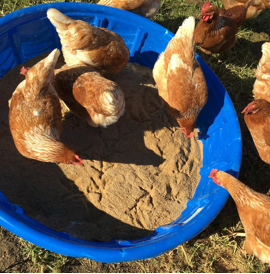
Some evidence suggests that adult chickens may develop severe pecking habits if not provided with adequate dustbathing material as chicks. The theory is that during the early establishment of this behavior, pecking that would naturally occur during dustbathing becomes redirected to pecking feathers
Ideally, chicks should have access to appropriate material the first two weeks of age when dustbathing behavior is forming, but providing the material after three weeks is still beneficial.
If your chickens have access to dirt, or you use bedding like rice hulls or peat, you may already be providing an appropriate substance that promotes dustbathing.
If you have have mite issues, dustbathing with Diatomaceous Earth (DE) is an excellent method of controlling them. In general, use 70% food grade DE and 30% play sand in a cat litter plastic box or kiddie pool to control mites via this method.
Perches
Chickens naturally feel safer when they are resting up high and away from predators. Perches are a great way to give your chickens a sense of security and a great way to promote leg health.
Activities such as jumping and balancing on perches help strengthen muscles and bones, both of which reduce the chances of your birds becoming injured and possibly even reduces the effects of lameness.
In addition, by spending less time walking or lying on possibly damp ground, your chickens will have more time to dry their feet and chest. Otherwise, prolonged exposure to moisture can lead to skin infections or abscesses to form on their feet, a condition known as bumblefoot.
Even though chickens are pretty good at finding places to perch on, it is a good practice to provide safe perching stations.
Make a perch from 2 x 2-inch wood bars with rounded smooth edges—slivers can cause bumblefoot infections. When measuring, be sure to give each bird 6 to 10 inches of perching space; this ensures that all your chickens have a chance to perch all at the same time, which they seem to enjoy doing especially at night.
In order to prevent birds from easily pecking other birds while perching together for warmth, it is a good practice to place perch bars 14 inches apart (assuming you need more than one perch).
Although birds like to perch up high, keep perches less than 3 feet off the ground in order to prevent leg injuries, keel bone damage, or egg ruptures.
As with dustbathing material, perches should also be added early on, or chicks will not use them as much as when they become adults. As a general rule of thumb, perches should be added by 6 weeks of age.
Perches can be simple single-bar perches. Encourage their use by placing them near feeders and waterers to get chicks in the habit of perching in the early stages of muscle and bone development.
Bales of fun!
Straw bales give you the most bang for your buck. They encourage natural foraging behaviors, reduce aggression, and improve leg health. Instead of pecking themselves or their friends, birds can spend hours pecking and scratching through bales.
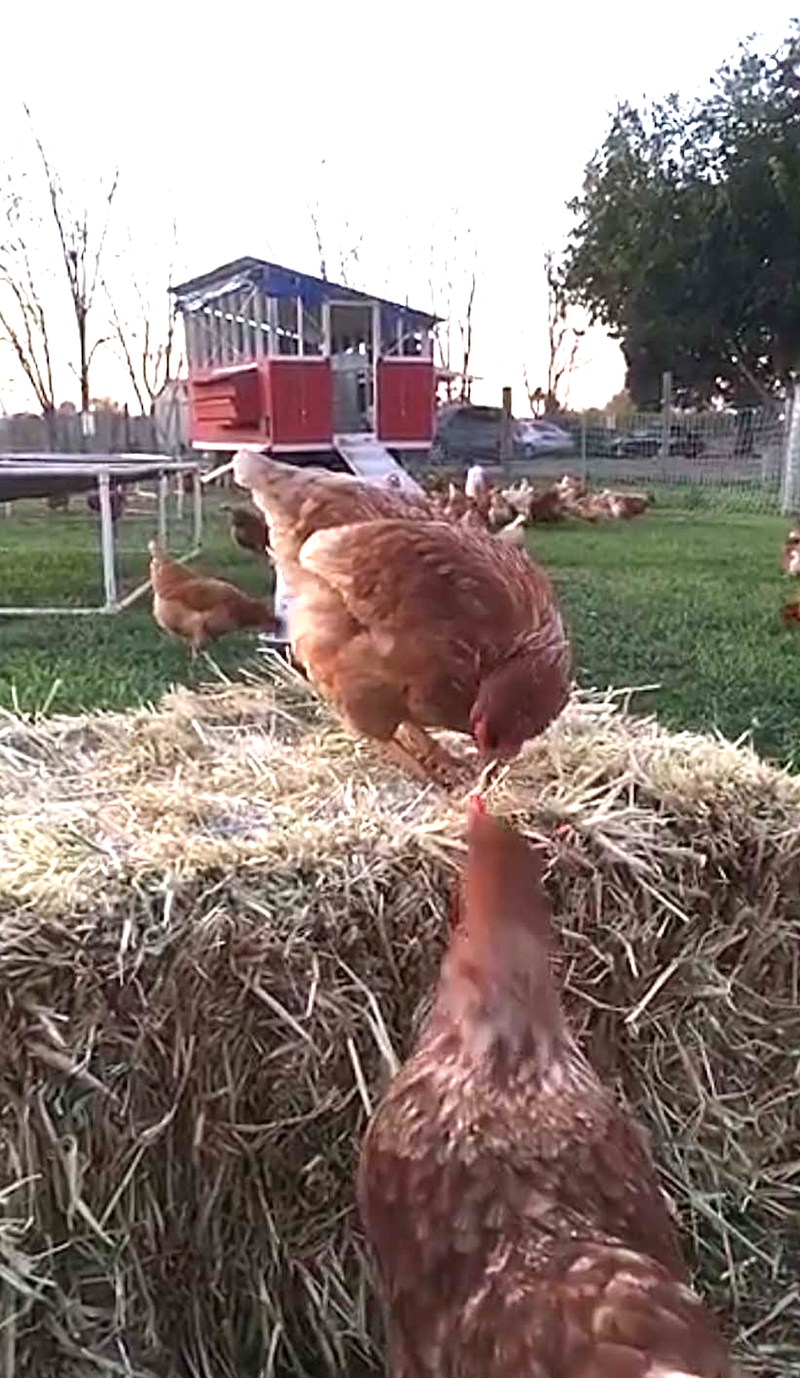
However, if not deployed correctly, bales can backfire and cause more pecking and aggression among your flock, especially if there is a really dominant chicken that doesn’t like to share.
If you notice that your chickens are fighting too aggressively over who gets to play with the straw bale, try adding multiple straw bales and put them far away from each other.
This layout makes it difficult for dominant chickens to fight off unwanted visitors because there are too many bales to protect and too much ground to cover between bales—the dominant chicken will give up and let the others join in on the fun.
Hint: you can use the same approach with other types of enrichments and toys.
Straw bales can also double as platform perches and encourage birds to jump on and off, leading to better coordination and stronger leg muscles and bones.
Shade structures
If your birds seem shy and do not seem to want to stray too far from your coop, consider using portable shade structures to encourage grazing and exploration. Shade structures not only provide protection from then sun but also protection from bird predators.
By adding a covered structure and creating a sense of security, your birds will be more likely to branch out and be less fearful overall. As a bonus, they may even use them as a perching station!
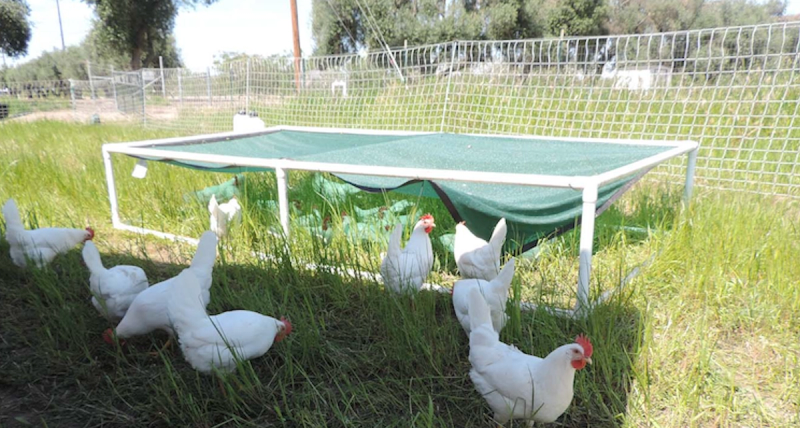
Example of a portable shade structure that is easy and easy to build. Based on personal experience, shade cloth that blocks 90% of the sun does the trick in the hot California sun. Find more information on how to build them at: https://ucanr.edu/sites/poultry/files/236853.pdf.
A good way to keep your birds from grazing the same spot is to move the shade structures every day.
Enhancing chicken-ness
By using a combination of these environmental enrichments to make your backyard more complex, you can help your flock express their “chicken-ness,” prevent abnormal behaviors from developing, encourage exploration and learning, increase exercise, and lastly reduce fearfulness in your flock.
Tags:Pitesky's Poultry

Chicken Whisperer is part of the Catalyst Communications Network publication family.










